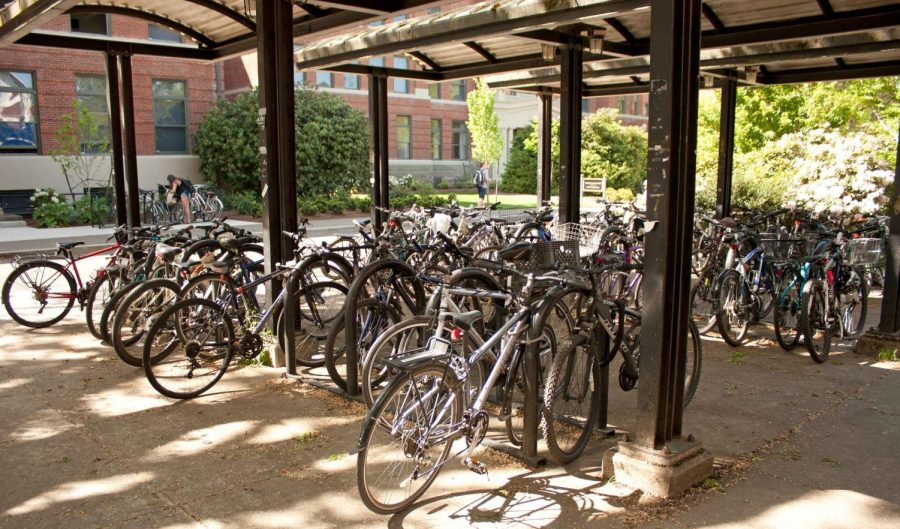Cyclist, pedestrian safety on campus causes concern
April 20, 2016
OSU campus safety says cyclists must follow rules, laws of the road
The roads and sidewalks that interweave among the Oregon State University campus present a danger to students and pedestrians alike, that many have experienced first-hand.
Oregon State University is ranked among the top 10 most bike friendly campuses, which is something many students enjoy, but the safety of pedestrians and bike riders is a concern many have as well.
“I prefer riding my bike to campus because I feel like it’s more efficient,” said business senior Oliver Farnes. “I get to class a lot faster than I do walking.”
When commuting to campus each day, OSU students have a choice to walk, bike, skate or drive to campus. With each student that commutes to campus, they are responsible for their own safety and visibility.
According to OSU campus safety, there are a few guidelines for cyclists to follow to ensure their safety, and the safety of others. Campus safety says that with such a large number of pedestrians, bicyclists should always drive defensively. In addition, cyclists have the same responsibilities as any driver of a vehicle, which means the rules of the road that drivers have to follow apply to them as well. This means that cyclists have to obey stop signs and one way signs.
According to campus safety, for cyclists a white light and red reflector are needed for visibility, especially at night. This equipment is mandatory and according to Oregon law, a cyclist can receive a Class D Traffic infraction if they are not using them properly. If cyclists fail to follow the rules the road, their visibility can decrease and safety can be put in danger.
Milly Syck, a junior in Human Development Family Sciences, is a student who commutes to campus either by walking or driving everyday. Syck said that she notices many cyclists breaking the law regularly.
“I feel that cyclists don’t follow the rules of the road,” Syck said. “They feel they have the same right of way as pedestrians when on campus and they don’t.”
Some students who bike to campus choose not to wear helmets. Ronald Lee, a senior in pre-dentistry, is one of many students who choose not to sport a helmet.
“I do not wear a helmet when I ride my bike on campus because first of all I do not own a helmet,” Lee said. He continued to say that having a helmet was just one more thing for him to forget.
According to Lee, when the afternoon rush hits campus, hundreds of students are commuting across campus in a wide range of ways, which causes a mess for those who cycle.
“During passing times when foot traffic is at the highest, I am a lot more uneasy about navigating and weaving my way between pedestrians,” Lee said.
Although there are dangers present for bikers and pedestrians during the day hours, nighttime and the darkness present even more danger, especially pertaining to visibility.
“Cyclists are definitely not visible at night,” Syck said.
Experts recommend that all cyclists use safety equipment such as reflectors and helmets, and that they remain aware of their surroundings at all times.
baro.news@oregonstate.edu


















































































![Newspaper clipping from February 25, 1970 in the Daily Barometer showing an article written by Bob Allen, past Barometer Editor. This article was written to spotlight both the student body’s lack of participation with student government at the time in conjunction with their class representatives response. [It’s important to note ASOSU was not structured identically to today’s standards, likely having a president on behalf of each class work together as one entity as opposed to one president representing all classes.]](https://dailybaro.orangemedianetwork.com/wp-content/uploads/2025/03/Screenshot-2025-03-12-1.00.42-PM-e1741811160853.png)
























